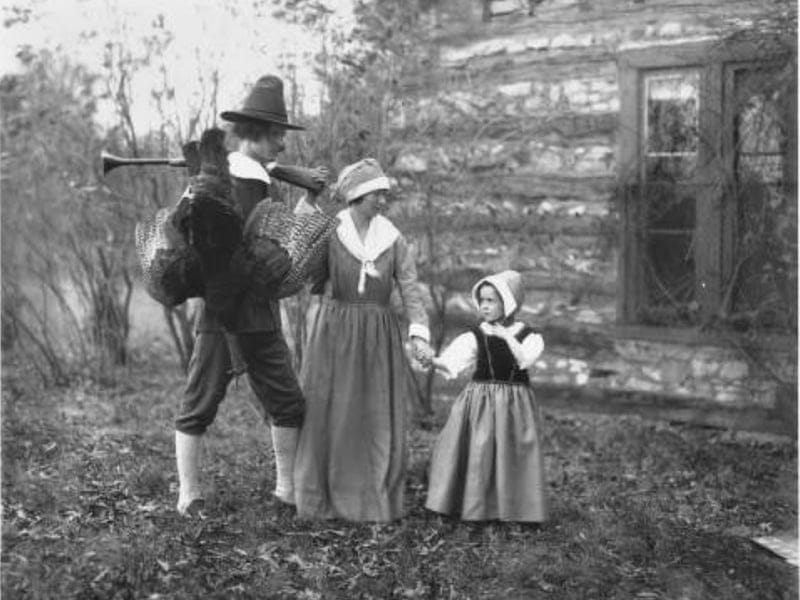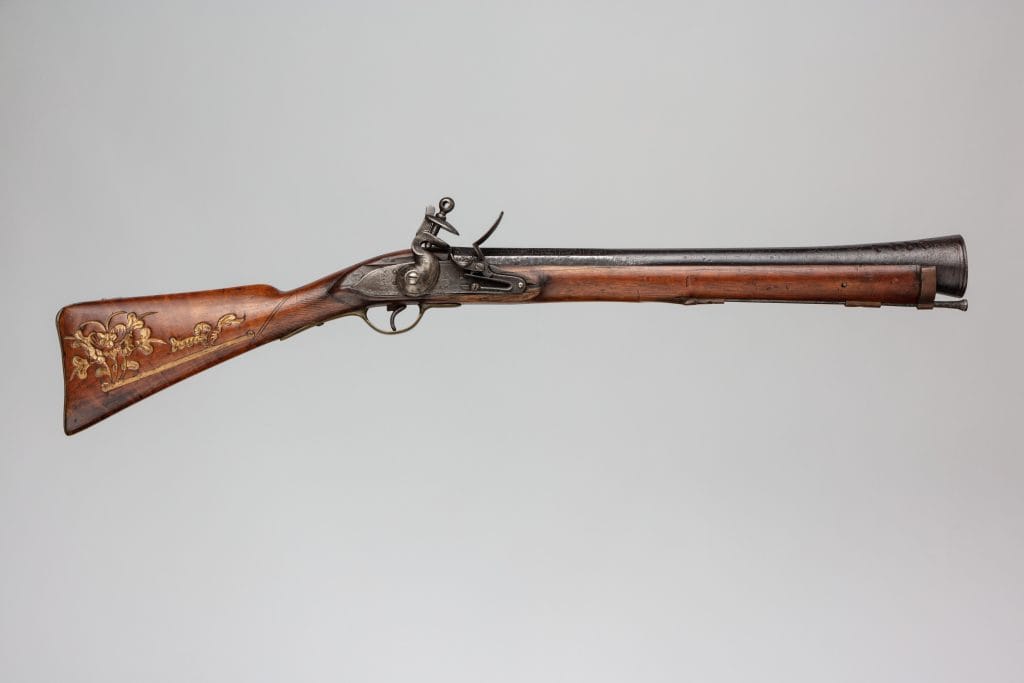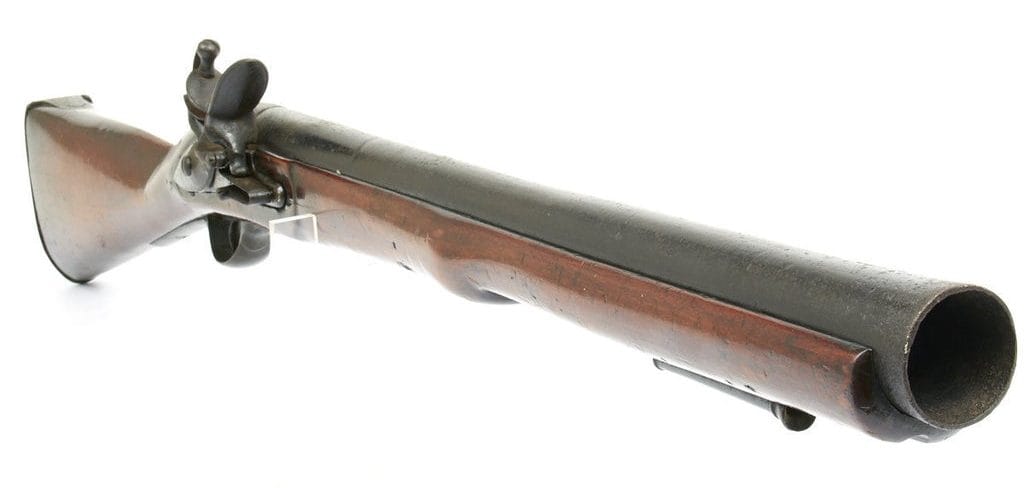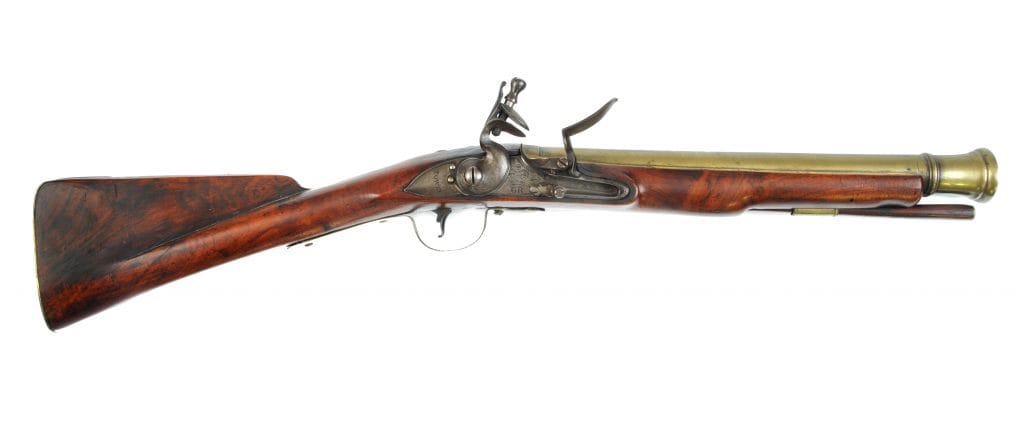If you Google what a Pilgrim looked like, you’ll likely find a mix of realistic paintings and cartoonish portrayals. You might see several different things, but what most have in common is the presence of a blunderbuss. You know, that big cannon-looking long gun. The big flared muzzle makes the weapon quite distinct.
That’s a blunderbuss, and over time, the Pilgrims and blunderbuss mythology have become intertwined. From Elmer Fudd to video games, if a Pilgrim has a gun, it’s likely portrayed as a blunderbuss. This leads me to ask if it’s true. Did the men who rode the Mayflower come armed with these massive weapons?

What’s a blunderbuss?
To make sure we are all on the same level, let’s establish what exactly we are talking about. The odd name is actually Dutch in origin and comes from the term donderbuis. Donder means thunder, and buis means pipe. It’s the thunder pipe, which I call dibs on as a band name. Also, the fact that Mossberg has never made a thunder pipe edition of the 500 disappointed me.

The idea behind the blunderbuss is fairly simple. Instead of firing one round, it would fire anywhere from 10 to 15 small pellets. Those pellets were each large enough to kill a man. These were essentially shotguns that came out of the 17th century. They were produced as both pistols and long arms.
Their famed bell-end design made loading the weapon much faster and easier when dealing with nearly a dozen pellets at a time. At the time, long guns were huge, often featuring long barrels that were measured in feet! Seriously 40 inches and beyond were common. The blunderbuss had a barrel length of about 2 feet, making it much shorter and handier for horse-mounted and close-quarter fighting.
It bears mentioning that the blunderbuss was designed for martial use. It was to be used in combat and not necessarily hunting. While it could pull double duty in a pinch, the overall design is for fighting people.
Who used the blunderbuss?
The blunderbuss has several legacies attached to it. The first is pirates and sailors. Understandably fighting on a ship meant tight and close-quarters environments. Pistols ruled alongside swords, but the blunderbuss could be aimed and fired quickly and efficiently at close range wiyh a decisive effect.
On the ground, the gun was often used by some cavalry and dragoon units of various militaries. When riding a horse and aiming at a moving target, it’s tough to hit anything. Launching a dozen projectiles that rapidly spread made hitting your target much easier.
In Great Britain, the Royal Mail made use of the blunderbuss. A mail coach would be steered by a single man armed with two pistols and a blunderbuss to fend off highwaymen. This might arguably be the first example of a coach gun, which is oddly similar to the Wells Fargo double-barrel shotguns. British police forces always made use of the gun and its general handiness at close quarters.
During the Revolutionary war, George Washington praised their capabilities. Lewis and Clark also took a few on their journey. However, they were always somewhat rare in North America.
Much like shotguns today, these were niche weapons. In certain situations, they excel but are fairly terrible outside of that situation. They were never mass-issued weapons by any means.

So were they at Plymouth Rock?
The Pilgrims landed at Plymouth Rock in 1620, and the blunderbuss was really invented until thirty years later…so no. That seems like an open-and-shut case. The book “Arms and Armor of the Pilgrims 1620 to 1692” by Harold L. Peterson dives deep into the armaments of the Pilgrims. He specifically mentions that the Pilgrims did not bring blunderbuss weapons with them, nor did they ever need them. (The book is available for free through Project Gutenberg.)
The land the Pilgrims colonized was wild and open, not exactly friendly to the strengths of the blunderbuss. The Pilgrims carried muskets with them to this new land. These muskets were most typically match lock guns, but flint locks were not that uncommon, and reportedly, even some wheel locks made their way across the ocean. These single-shot muskets were the most important weapons the Pilgrims had.

Why exactly did the blunderbuss become synonymous with Pilgrims? It’s tough to say for sure. When drawing or painting, the blunderbuss certainly stands out with its oversized bell-shaped barrel. There also might have been some form of misunderstanding.
Outside the traditional muskets, the Pilgrims brought a number of fowling pieces for hunting birds, which were important for hunting at the time. They were reportedly very important to the survival of the Pilgrims. Additionally, the Pilgrims used the classic buck and ball loads. These loads consisted of one large projectile and a number of smaller projectiles. This increased the chance of landing a hit and worked like a pseudo shotgun.
A Myth Denied
I think it’s easy to see why the blunderbuss became so closely associated with the Pilgrims. If you read about fowling pieces and buck and ball loads, it would be easy to associate these with shotguns. The blunderbuss was a proto-shotgun, so I’d assuPe confusion was the main reason. Plus, if you’re an artist, a blunderbuss is more eye-catching, and your work is a visual medium.
In reality, the blunderbuss never landed at Plymouth Rock and was never in the hands of the initial batch of Pilgrims. Although they were well armed with pistols and muskets, as well as swords and halberds. Even if the blunderbuss had been around at this time, it seems unlikely they would have much use for one.
It was a fighting weapon for close-range work, and there wasn’t a lot of close-range work to be had. The musket remained the superior and more versatile option. With that said, don’t tell Porky Pig. He seems to enjoy his thunder pipe.


